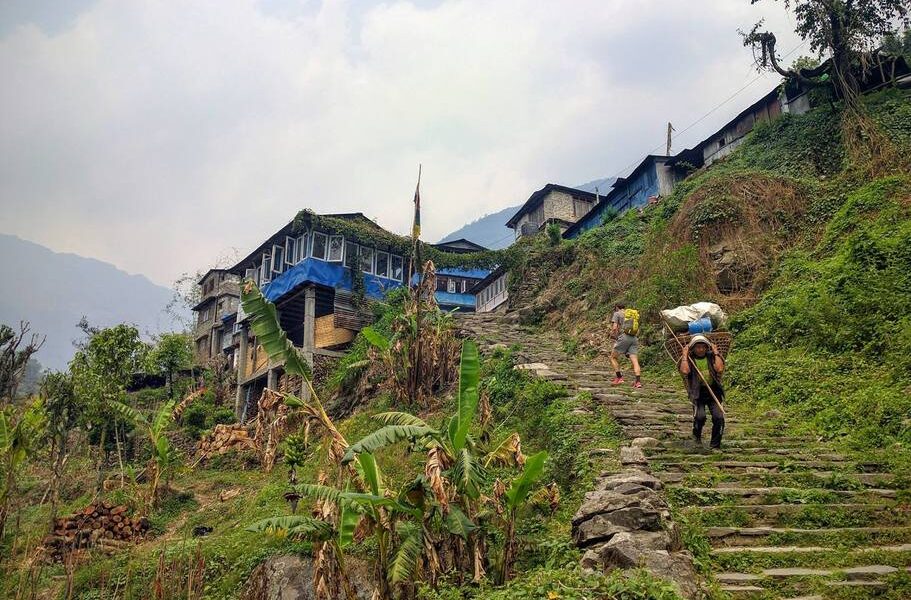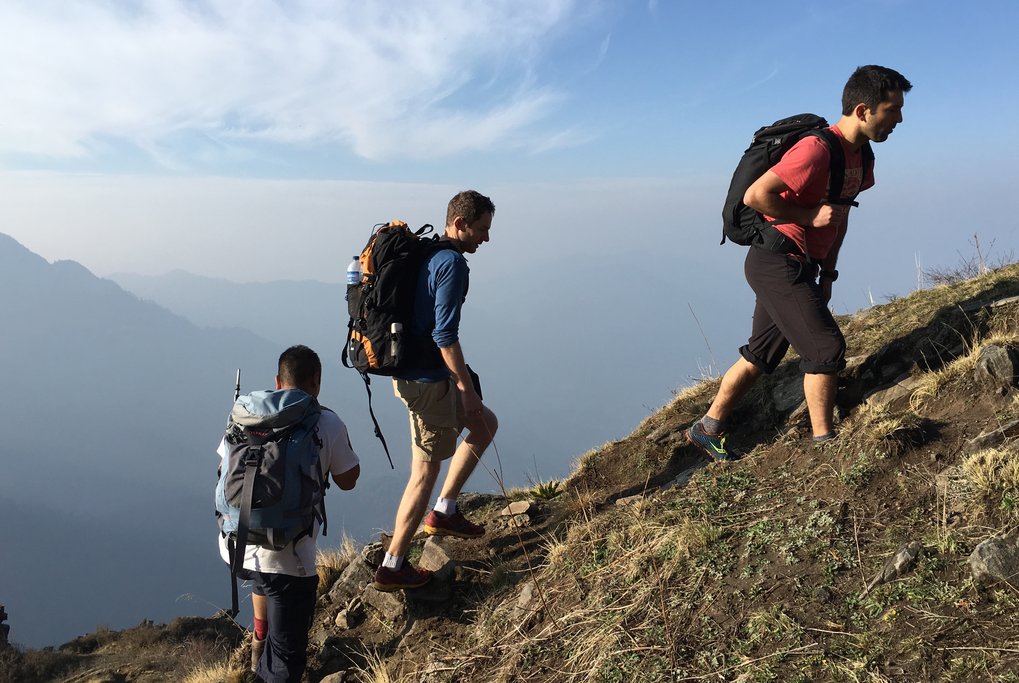
Trekking through the Himalayas is Nepal’s key attraction, and is a life-changing experience for many travelers, regardless of whether they are experienced hikers, or novices. This article is a primer to trekking in Nepal and answers frequently asked questions._x000D_
## Discover the Wonders of Trekking in Nepal: An Immersive Journey
Trekking, at its heart, represents a profound connection with the natural world. It’s more than just hiking; it’s an immersive experience, a multi-day journey into the heart of the mountains. In the context of Nepal, trekking specifically refers to traversing the trails that wind their way through the magnificent Himalayan mountains and the verdant foothills that cradle them. These are not simply pathways; they are lifelines, historically the only means of transport in regions where the rugged terrain makes road construction an impossibility.
Treks in Nepal are designed to lead you through remote villages, communities that have stood the test of time, often for centuries. You’ll follow in the footsteps of generations, utilizing trails that have been used by the local inhabitants for countless years. These paths are imbued with history, culture, and the spirit of the Nepali people.
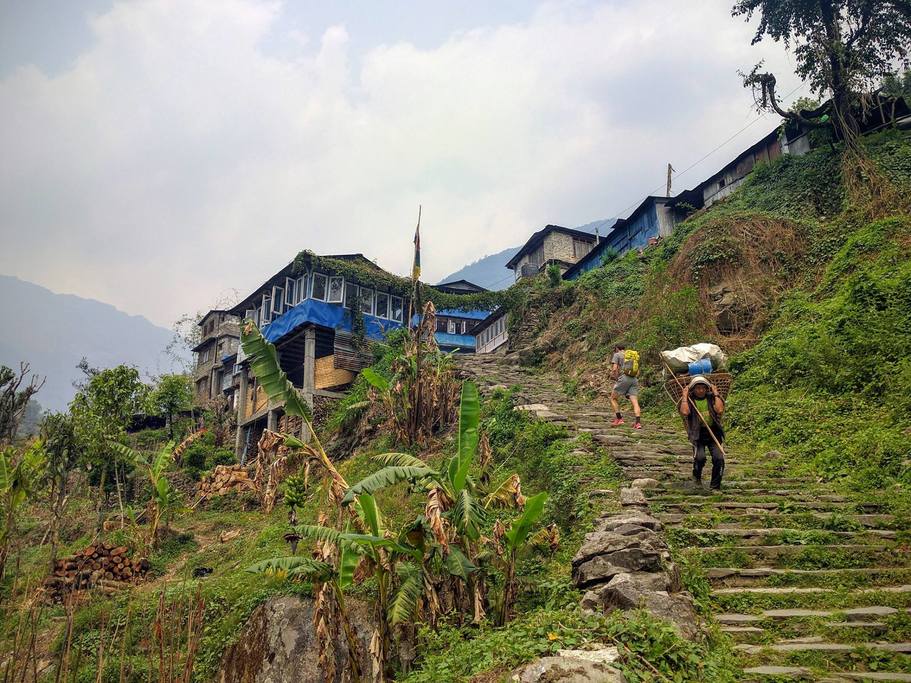
Embarking on a trekking adventure along the mountain trails of Nepal is an experience unlike any other. The Himalaya stand as a testament to nature’s grandeur, a landscape that defies comparison. The sheer scale of the Himalayan mountains is awe-inspiring, dwarfing everything in its presence. The diverse and amazing different viewpoints that punctuate the trails offer unparalleled perspectives of this majestic range. Beyond the scenery, you’ll encounter the warm hospitality of the local people, whose smiles are as radiant as the mountain sun. The rhythm of life slows down to a more deliberate pace, dictated by the movement of your feet, allowing you to truly savor each moment and appreciate the simplicity of existence. It’s no wonder that so many travelers, making their first journey to Nepal, describe their trekking experience as profoundly life-changing, a testament to the transformative power of this unique land.
Selecting the perfect trek can be a daunting task, given the myriad of options available. To help guide you in your decision-making process, consider researching some of the best treks in Nepal, those classic routes that have captivated travelers for years. Furthermore, explore the possibilities of shorter treks in Nepal, ideal for those with limited time or those seeking a less strenuous experience.
## Popular Trekking Regions: Unveiling Nepal’s Diverse Landscapes
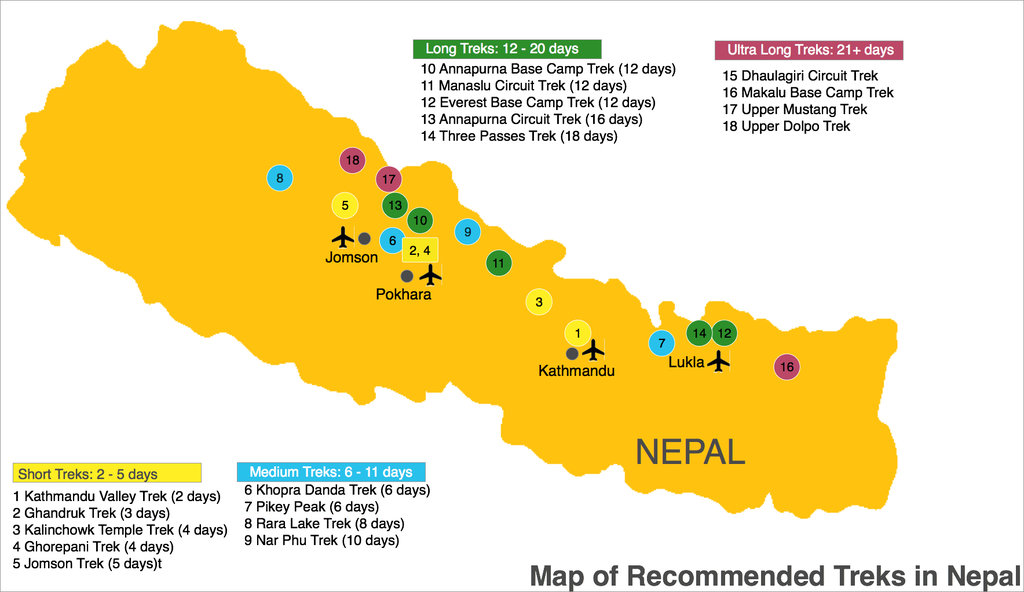
Nepal boasts a diverse array of trekking regions, each possessing its own distinctive characteristics and allure. Among these, two regions stand out as particularly popular destinations for trekkers from around the globe: the Annapurna region and the Everest region.
The Annapurna region is renowned for its stunning diversity, encompassing lush green valleys, terraced farmlands, and towering snow-capped peaks. Treks in this region, such as the Annapurna Circuit and the Annapurna Base Camp trek, offer a blend of cultural immersion and breathtaking scenery.
The Everest region, home to the world’s highest peak, presents a more challenging and dramatic landscape. Treks in this region, including the Everest Base Camp trek and the Gokyo Lakes trek, offer unparalleled views of Mount Everest and the surrounding Himalayan giants.
Beyond these two iconic regions, Nepal is home to numerous other trekking areas, each with its own unique appeal. Consider exploring Manaslu, a region known for its pristine beauty and remote trails; Mustang, a high-altitude desert landscape steeped in Tibetan culture; or the Kathmandu valley, offering a variety of shorter treks with easy access from the capital city.
To assist you in choosing the trek that best suits your interests and abilities, it is recommended to explore the options for short treks, perfect for those seeking a taste of the Himalayas without a long-term commitment, and the classic (2-3 week) treks, ideal for those seeking a more immersive and challenging adventure.
## Accommodation on the Trails: Teahouses and Camping in Nepal
The accommodation options available during your trek in Nepal vary depending on the route you choose. Most popular treks follow trails dotted with lodges, often referred to as teahouses, which provide basic but comfortable accommodation for trekkers.
Teahouse trekking is a unique and charming aspect of the Nepali trekking experience. Lodges are simple guesthouses that cater specifically to trekkers, offering basic amenities such as beds, blankets, and meals. They provide a welcome respite after a long day of hiking and a chance to connect with fellow travelers.
More remote treks, which venture into areas where villages and lodges are scarce, require camping. Camping treks demand more extensive logistical planning and come at a higher cost, as food, cooking fuel, tents, and other supplies must be carried by porters. However, they offer a more immersive and adventurous experience, allowing you to truly connect with the wilderness.
## What to Expect on the Trails: Encounters and Experiences in the Himalayas
The trails of Nepal serve as vital arteries connecting remote villages that are inaccessible by road. Imagine these trails as highways from a bygone era, where foot traffic reigned supreme. As you trek, you’ll encounter a fascinating array of “trail traffic,” a vibrant tapestry of local life.
Be prepared to share the trail with porters carrying an assortment of goods, from fresh vegetables to timber wood, and even live chickens. You’ll cross paths with children walking to school, their laughter echoing through the valleys, and herders guiding their yaks along the rugged paths. The variety of local trail traffic is sure to surprise and inspire you, offering a glimpse into the daily lives of the Nepali people.
The scenery along your trek is ever-changing, evolving with each passing day and each new valley you enter. Depending on the specific trek you choose, you’ll traverse through dense rhododendron forests, bursting with color in the spring; terraced vegetable paddies clinging to steep slopes, a testament to human ingenuity; open pastures where yaks graze peacefully; and snowfields shimmering under the mountain sun. You’ll also cross spectacular suspension bridges, swaying high above rushing rivers, adding an element of adventure to your journey.
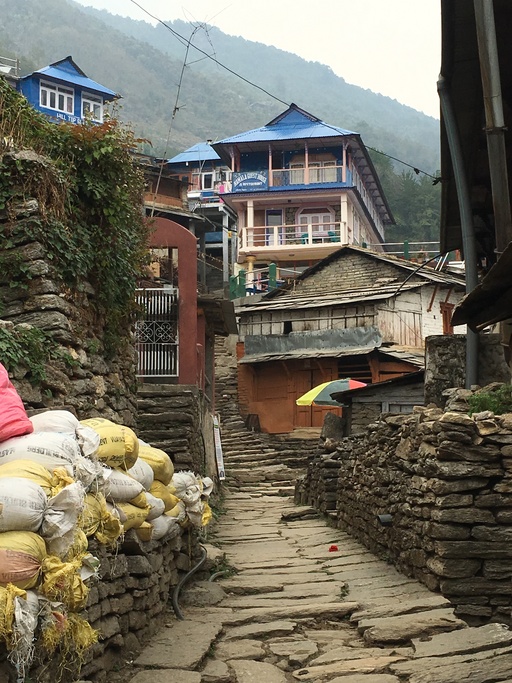
The villages you encounter along the way range from small clusters of houses to expansive settlements comprising hundreds of homes nestled on hillsides. Many of these villages possess a unique charm and character, often situated in breathtaking locations, offering panoramic views of the surrounding landscape.
Your trekking days typically involve around 3 hours of hiking in the morning and another 3 hours in the afternoon, allowing ample time to soak in the scenery and interact with the local communities. You’ll stop for lunch in villages along the way, savoring local cuisine and experiencing the warmth of Nepali hospitality. On days when villages are sparsely located, you may choose to pack a lunch to enjoy amidst the stunning natural surroundings.
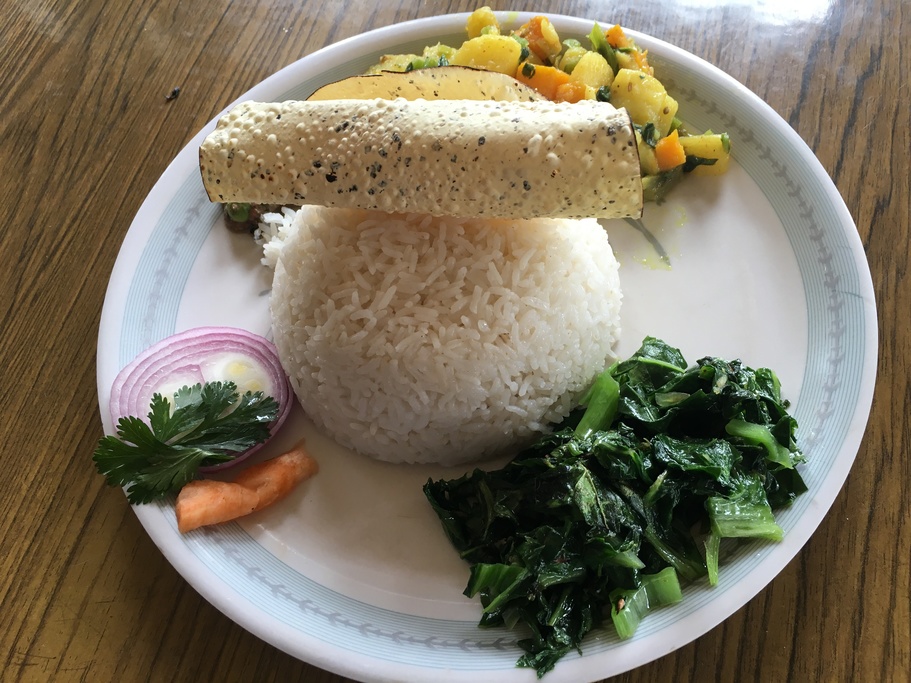
The teahouses along the more popular trekking trails offer a wide variety of food options, catering to diverse tastes. Common menu items include fried rice, fried chicken, spaghetti bolognese, and an array of other dishes. However, it is often best to embrace the local specialty, Dal Bhat, a traditional Nepali meal consisting of lentil soup, rice, and vegetables, as it’s what the locals prepare best.
## The Best Time to Trek: Seasons and Considerations in Nepal
Nepal’s weather patterns significantly influence the trekking seasons. There are two primary seasons that are considered ideal for trekking: the spring season, which spans from March to May, and the autumn season, from the end of September to November.
The spring season is characterized by mild temperatures, clear skies, and blooming rhododendrons, creating a vibrant and picturesque landscape. The autumn season offers equally favorable conditions, with crisp air, clear visibility, and stunning views of the snow-capped peaks.
Trekking during the summer months presents challenges due to the monsoon season, which brings heavy rainfall, increased risk of landslides, and reduced mountain views. However, the Upper Mustang area, nestled in the rain shadow, offers excellent trekking opportunities during the summer months.
Trekking in winter is gaining popularity, despite the colder temperatures and the potential for higher passes to be closed due to snow. The winter months often bring clear weather and exceptional views, making it a rewarding experience for those prepared for the conditions.
## Weather Conditions and Temperatures: Preparing for the Elements
Weather conditions during your trek can vary significantly depending on the season and the specific route you choose. Even on the same trek, temperatures can fluctuate dramatically based on elevation.
It is not uncommon for temperatures at the beginning of a trek to be around 30 degrees Celsius (85 degrees Fahrenheit), while plummeting to well below freezing when crossing a high pass on the same trek. Therefore, it is essential to be prepared for a wide range of weather conditions and pack accordingly, including layers of clothing, warm gear, and appropriate footwear.
## The Benefits of Hiring a Guide: Safety, Knowledge, and Cultural Immersion
While some well-documented treks can be undertaken independently, it is highly recommended to hire a guide and one or more porters to assist with carrying your personal belongings. The benefits of hiring a guide are numerous and extend beyond simply navigating the trails.
Safety is paramount when trekking in the Himalayas. While the more popular trails are generally safe, having an experienced guide with you provides an added layer of security. Accredited guides are well-trained in first aid and emergency procedures, and they know how to respond effectively in case something goes wrong.
A guide possesses invaluable knowledge of the local area, including the terrain, weather patterns, and cultural nuances. They can help you navigate challenging sections of the trail, identify local flora and fauna, and provide insights into the traditions and customs of the communities you encounter.
Nepalese guides, often members of the Sherpa people, are renowned for their kindness, hospitality, and deep connection to the mountains. Many trekkers forge lasting friendships with their guides, creating bonds that extend far beyond the duration of the trek.
By hiring a guide, you contribute to the Nepalese economy, providing valuable employment opportunities for local communities and supporting sustainable tourism practices.
## Organizing Your Trek: Permits and Local Expertise
Permits are required for most treks in Nepal, and the specific regulations vary depending on the route you choose. Some treks require a guide and have minimum group size requirements.
It is highly recommended to work with reputable local trekking companies who can handle all aspects of your trip, including obtaining the necessary permits, arranging local transport, and providing experienced guides and porters. These companies possess in-depth knowledge of the region and can ensure a safe and enjoyable trekking experience.
## Trekking After the 2015 Earthquake: Resilience and Recovery
Nepal has made remarkable progress in recovering from the devastating earthquakes of 2015. Trekking is now as safe as it was before the earthquakes, with the vast majority of lodges and trails fully restored.
While some areas still show evidence of landslides, particularly in Manaslu, the trekking routes remain open. The Langtang area is undergoing ongoing rebuilding efforts, with trails and lodges gradually being restored.
Visitor numbers are steadily increasing, demonstrating the resilience of the Nepali people and the enduring appeal of the Himalayas.
B-1818

